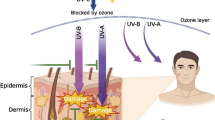Abstract
The human body sweats to release heat, and the presence of sweat may cause the sticking of fabric against skin, leading to a strong discomfort clingy perception or skin injuries. This paper describes a novel testing method designed to measure the wet cling frictional force between clothing fabrics and a wetted skin simulant. The developed methodology shows that sweating rate, sweating time, and ambient air movement influence the build-up of frictional resistance to the movement of fabrics along the surface of a sweating skin simulant. The test method enables observation of the relationships between the measured wet cling force and the construction of a selected set of polyester and cotton knit fabrics having different moisture absorption, wicking, and drying properties. This analysis reveals that thin polyester jersey knits with excellent wicking, evaporative, and drying properties exhibit low levels of wet cling. On the other hand, thicker double-knit polyester construction can exhibit lower wet cling force when its inherently greater absorption capacity minimizes moisture build-up in the skin-fabric interface. Cotton knits generally have higher wet cling resistance than polyester knits of similar thickness because of their greater capacity to retain moisture. The wet cling tester shows that moisture-related friction force is not present in knit fabrics that incorporate a durable water repellent finish, demonstrating an alternative method to reduce wet cling. It also reveals that one-way wicking fabrics reduce wet cling frictional force by transporting moisture away from the fabric–skin interface. These studies find no statistically significant correlations between standard measures of fabric moisture properties and wet cling force in this group of knit materials. This finding underscores the complex nature of the factors influencing wet cling performance. It demonstrates the utility of the developed test methodology for measuring wet cling in different conditions.







Similar content being viewed by others
References
H. Gao, A.S. Deaton, X. Fang, K. Watson, E.A. DenHartog, R. Barker, Text. Res. J. 92, 219 (2022)
H. Gao, A.S. Deaton, R. Barker, X. Fang, K. Watson, Int. J. Occup. Saf. Ergon. (2022). https://doi.org/10.1080/10803548.2022.2058746
M. Raccuglia, K. Pistak, C. Heyde, J. Qu, N. Mao, S. Hodder, G. Havenith, Text. Res. J. 88, 2155 (2018)
P. Kenins, Text. Res. J. 64, 722 (1994)
B.A. McGregor, J. Stanton, J. Beilby, J. Speijers, D. Tester, Text. Res. J. 85, 912 (2015)
L. Vilhena, A. Ramalho, Lubricants 4, 6 (2016)
K.-P.M. Tang, K.-H. Chau, C.-W. Kan, J.-T. Fan, IEEE Access 6, 24777 (2018)
L. Lou, Y. Qiu, F. Ji, X. Zhu, Text. Res. J. 88, 108 (2018)
E. Bertaux, E. Le Marec, D. Crespy, R. Rossi, D. Hegemann, Surf. Coat. Technol. 204, 165 (2009)
A. Wong, Y. Li, P. Yeung, P. Lee, Text. Res. J. 73, 31 (2003)
M. Raccuglia, B. Sales, C. Heyde, G. Havenith, S. Hodder, Appl. Ergon. 73, 33 (2018)
R. Jiang, Y. Wang, Perception 49, 1311 (2020)
K.-P.M. Tang, K.-H. Chau, C.-W. Kan, J.-T. Fan, R. Soc, Open Sci. 5, 180860 (2018)
K.-P. Maggie, K.-H. Chau, C.-W. Kan, J.-T. Fan, Fibers Polym. 19, 2418 (2018)
E. Classen, in Advanced characterization and testing of textiles. ed. by P. Dolez, O. Vermeersch, V. Izquierdo (Woodhead Publishing, Cambridge, 2018), p.59
F. Ji, Y.P. Qiu, J.F. Xie, S.Y. Sun, Adv. Mat. Res. 627, 476 (2013)
D.J. Cottenden, A.M. Cottenden, J. Mech. Behav. Biomed. Mater 28, 410 (2013)
R. Ketola, V. Mishra, A. Kiourti, Sensors 20, 3735 (2020)
K.A. Barnes, M.L. Anderson, J.R. Stofan, K.J. Dalrymple, A.J. Reimel, T.J. Roberts, R.K. Randell, C.T. Ungaro, L.B. Baker, J. Sports Sci. 37, 2356 (2019)
Y.-Q. Xiao, C.-W. Kan, Coatings 12, 301 (2022)
AATCC-TM 197 (2018) "Vertical wicking of textiles", American Association of Textile Chemists and Colorists
AATCC-TM 201 (2012) "Drying rate of fabrics: heated plate method", American Association of Textile Chemists and Colorists
S. Yoo, R.L. Barker, Text. Res. J. 74, 995 (2004)
AATCC-TM 195 (2012) "Liquid moisture management properties of textile fabrics", American Association of Textile Chemists and Colorists
Author information
Authors and Affiliations
Corresponding author
Ethics declarations
Conflict of interest
The authors declare no conflict of interest.
Rights and permissions
Springer Nature or its licensor (e.g. a society or other partner) holds exclusive rights to this article under a publishing agreement with the author(s) or other rightsholder(s); author self-archiving of the accepted manuscript version of this article is solely governed by the terms of such publishing agreement and applicable law.
About this article
Cite this article
Gao, H., Deaton, A.S. & Barker, R.L. A Novel Method for Measuring the Wet Cling Properties of Textiles. Fibers Polym 24, 187–194 (2023). https://doi.org/10.1007/s12221-023-00074-2
Received:
Revised:
Accepted:
Published:
Issue Date:
DOI: https://doi.org/10.1007/s12221-023-00074-2




